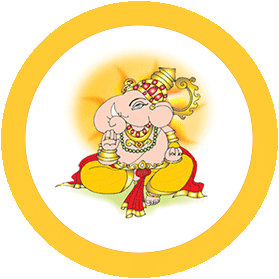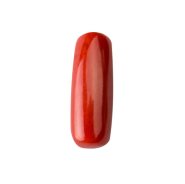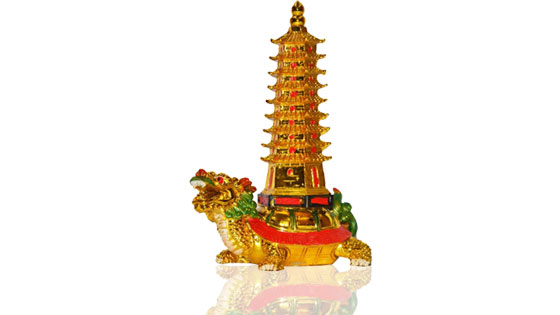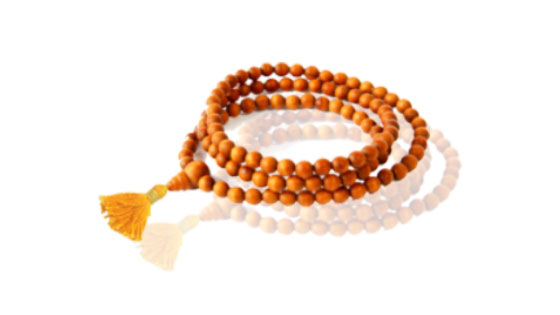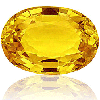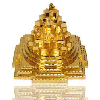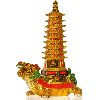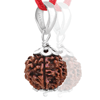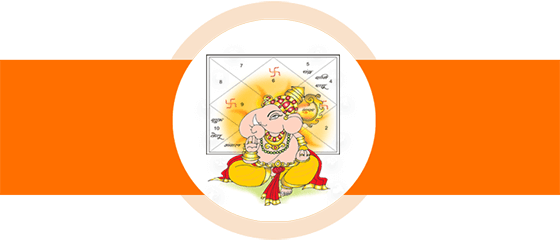Yoga for Glowing Skin
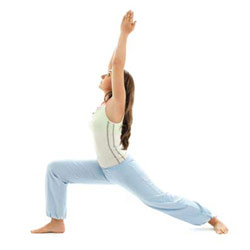
There are no special suggestions on this subject, in the practical yoga treatises. It is, therefore, possible to base the essentials of general hygiene only upon an observation of the habits of the yogins with respect to the care of the skin, hair, and nails etc. Modern hygiene has covered this field quite elaborately, and it is needless to enter into very many details of this subject.
The skin is composed of two layers: a superficial thin layer (epidermis) and the deep layer (dermacutis) which is the true skin. The superficial layer is readily separable, by the fluid of any ordinary blister, the upper skin is raised. The chief function of the surface skin is to give protection to the true skin below and to maintain its normal softness and pliability. In the epidermis, there is a constant production of new cells taking the place of other old cells which are continually pushed towards the surface and finally shed by the skin. This process of desquamation in the superficial skin is constantly taking place, and the hygiene of the skin consists partly in aiding this process.
SKIN: AN ORGAN OF SENSATION
The true skin is the organ of sensation; and the nerve endings and end-organs giving rise to sense-complexes are contained in this. To the yogins, the skin is one of the external organs of perception, the sense of touch (sparserdriya) with the preponderance of earth-elements. Roehring has well illustrated the importance of the skin as an organ of sense by the statement that, next to sight, the sense of touch is the most important of all the senses. Again, this significance of the skin as an organ of sensation is exemplified by the pathologicconditions which accompany loss of reflex sensibility. Different portion of the cutaneous area, however, according to Goldschcider, presentvariations in sensitiveness.
FUNCTIONS OF THE SKIN
Apart from being an organ of sensation, the skin functions in many important capacities, viz., (a)protection, (b) heat regulation, (c) respiration, and(d) elimination. The aesthetic aspects of the skin as an aid to beauty are too well recognized both through its delicacy of texture and freshness of color.
(a) Protection: The skin acts as a protective organ by mechanically covering the entire body and so defending the internal structures from direct exposure, infection or other external violence. In fact, the skin and membranes are the first line of defense. For it is not the dirt or rust that causes infections, but the germs that enter the skin or the membranes. The important thing is that so long as the skin or the membranes remain secure and are not broken, no amount of germ scan do any damage from outside. Also by virtue of its being an organ of sensation, it adapts itself to all possible changes and local disturbances and, thus, prepares the entire system for defense.
(b) Heat Regulation: It is the skin which adjusts itself to variable and sudden atmospheric changes and, to a large extent, regulates the normal temperature of the body. For example, when the surrounding air is much warmer than the body, the vessels of the skin dilate, free perspiration takes place, and by its evaporation, the body becomes cooled. When, however, the air is cooler than the body, the blood vessels contract and retain the warmth of the body by lessening the amount of blood in the skin to be cooled.
(c) Respiration: Contrary to the popular belief that only the lungs breathe, it may be pointed out that a respiratory interchange of gases occurs also through the skin. Woods Hutchinson goes farther and speaks even of the "skin heart" as the factor in the human circulation. With regard to skin respiration, Bischoff has shown that even while the total quantity of interchange (of air) is very small, the function, however, is extremely essential to the health of the body.
(d) Elimination: The skin is an organ of absorption as well as of excretion. The process of absorption, of course, is not so important as the process of excretion. This has been recognized as such as long ago as the time of Galen. Of late, it has been realized by the physiologists that the skin is second in importance to the kidneys (Picard).The action of the skin, therefore, is a great aid to the kidneys in the process of elimination of toxins from the body. If these systemic poisons eliminated by the organism through the skin are not quickly removed by proper ventilation and bathing etc., they get reabsorbed into the system just as the poisonous exhalations of the lungs during confinement in a dark ill-ventilated room. Many clinical observations go to prove that when this special function of elimination through the skin is impaired, it gives rise to a number of diseases.
DISEASES DUE TO IMPROPER CARE OF THE SKIN
The most common of these disturbances are: chapped skin, dry and skaly skin, itching skin (itchmite), and ringworm etc. These irruptions could, however, be easily remedied by sun, air, and water baths. In chronic cases, it may become necessary to use medicinal powders and ointments. The cutaneous infections and diseases- e.g., measles and chicken-pox etc. which really call for constitutional and radical treatment are those that come not only through exposure of the skin but through unhygienic conditions in many other respects. Hives, for example, is really an indication of improper diet, notwithstanding the reports of doctors at New York Hospital that it is due to the psychological factor of resentment (Miller).
Lerch suggests that "before commencing [any kind of treatment] it is necessary to thoroughly clean mucous membrane and skin, 'the covering of the body proper.' Both are important organs, which prevent recovery and cause disease, if not kept clean. An abnormal mucous membrane is an open door to any infection."
NEED AND IMPORTANCE OF SKIN HYGIENE
The special characteristics and importance of the skin have been most poetically epitomized by Hutchinson thus: "A tissue which is like silk to the touch, the most exclusively beautiful surface in the universe to the eye and yet a wall of adamant against hostile attacks. Impervious alike, by virtue of its wonderful responsive vitality, to moisture and draught, cold and heat, electrical charges, hostile bacteria, the most virulent of poisons and the deadliest of gases, it is one of the real wonders of the world."
In many diseases, it is possible even to diagnose the nature of an ailment from the colour of the skin as in the case of jaundice, and this shows most certainly the intimate relation of the skin to the activities of the internal organs. Again, as outlined in the various functions of the skin, if is evident that the skin contributes greatly to our physical well-being and its hygienic considerations, therefore, are as essential as those of the other organs treated in the previous chapters. It must, however, be emphasized here that the hygiene of the skin also involves a number of other considerations, prominent, among which are food, physical education, bathing and the like which have been treated separately in the next chapter.
INFLUENCE OF SUN, AIR, WATER AND MUD ON THE SKIN
Several of the largest sanitariums in the world, namely, at Dresden, Carlsbad, Aix-les-bains, Salins-du-jura, Harrogate, Nantwich and Battle Creek, etc., depend largely upon the curative effects of sun, air and water and mud applied externally, at times in some places. This adds considerably to the value of skin hygiene. Whether the exact scientific details of skin hygiene as they are known today were known to the ancient yogins or not is debatable. What, however, is certain is that they fully realized the great value of sun, air and water baths, and a casual use of mudpacks for keeping the skin in its healthy condition. Only in recent years have these become the means of successful cure and widely adopted by the physicians who are believers in Nature Cure methods and also by a large number of drugless healers in all parts of the world.
As to yoga skin hygiene, the life of the yogin Inthe Mountains offers him the most favourable conditions for sun and air baths. He exposes his body- all undressed except for the loin cloth to the sun in the early mornings for two hours between6-30 a.m. to 8-30 a.m.206 and retires to the shade when the sun has much greater heating power. This is repeated again in the evening during gardening and other light activities.
Air baths and ventilation are quite common to him for the very simple reason that a large area of his body except for a T-shaped bandage on the loins is mostly uncovered and the skin is thus constantly brought in direct contact with the atmospheric air. In course of time, this repetition of exposures to temperature through, what is termed, acclimation insures the skin to bear and adapt itself to all-weather conditions. Suring and Lode offer us laboratory investigations to show-that this adaptation to temperature impressions to a blunting of sensibility to bear heat or cold improves the physical regulation of heat as distinguished from the chemical which is due to tissue changes. The other interesting aspect of the yoga skin hygiene is the occasional use of bog baths, mud packs and mud washes. It has been found that the black mud used by the yogins is most soothing and stimulating, a veritable skin tonic.
HAIR AND NAILS
Cleanliness of the scalp is perhaps the most important measure of hair prophylaxis, as the irritation due to dandruff and other causes, many times, gives rise to severe headaches and disturbances of the nervous system. The author is able to suggest from personal experience that cleansing of the hair with the black mud is really more effective than mere washing with soaps or shampooing powders or liquids. The activities of the fingers and palms necessary for the removal of mud also supply the much needed massage and thus stimulates surface circulation by frictions.
The orthodox yogins still follow the practice of rubbing the nails against smooth stones for their removal. The cleanliness of these appendages is thoroughly observed through scrupulous washing of the extremities immediately after any unclean function of the body.
Astrological services for accurate answers and better feature
Astrological remedies to get rid of your problems

AstroSage on MobileAll Mobile Apps
AstroSage TVSubscribe
- Horoscope 2026
- राशिफल 2026
- Calendar 2026
- Holidays 2026
- Shubh Muhurat 2026
- Saturn Transit 2026
- Ketu Transit 2026
- Jupiter Transit In Cancer
- Education Horoscope 2026
- Rahu Transit 2026
- ராசி பலன் 2026
- राशि भविष्य 2026
- રાશિફળ 2026
- রাশিফল 2026 (Rashifol 2026)
- ರಾಶಿಭವಿಷ್ಯ 2026
- రాశిఫలాలు 2026
- രാശിഫലം 2026
- Astrology 2026








